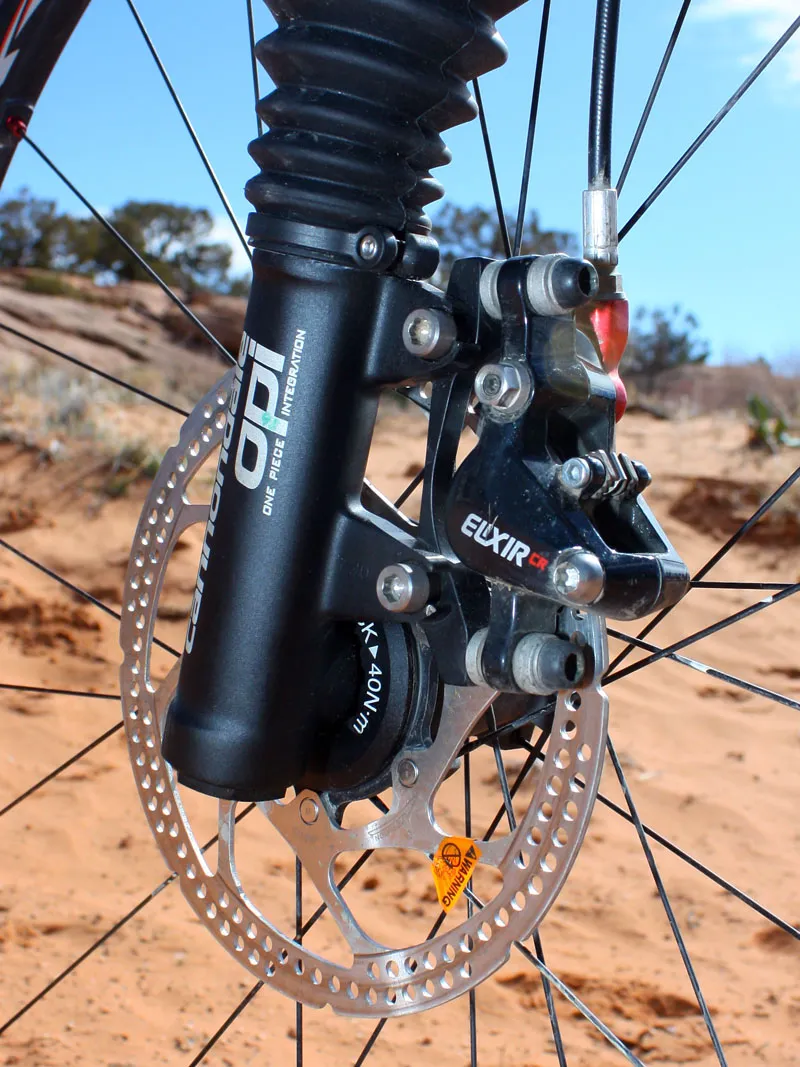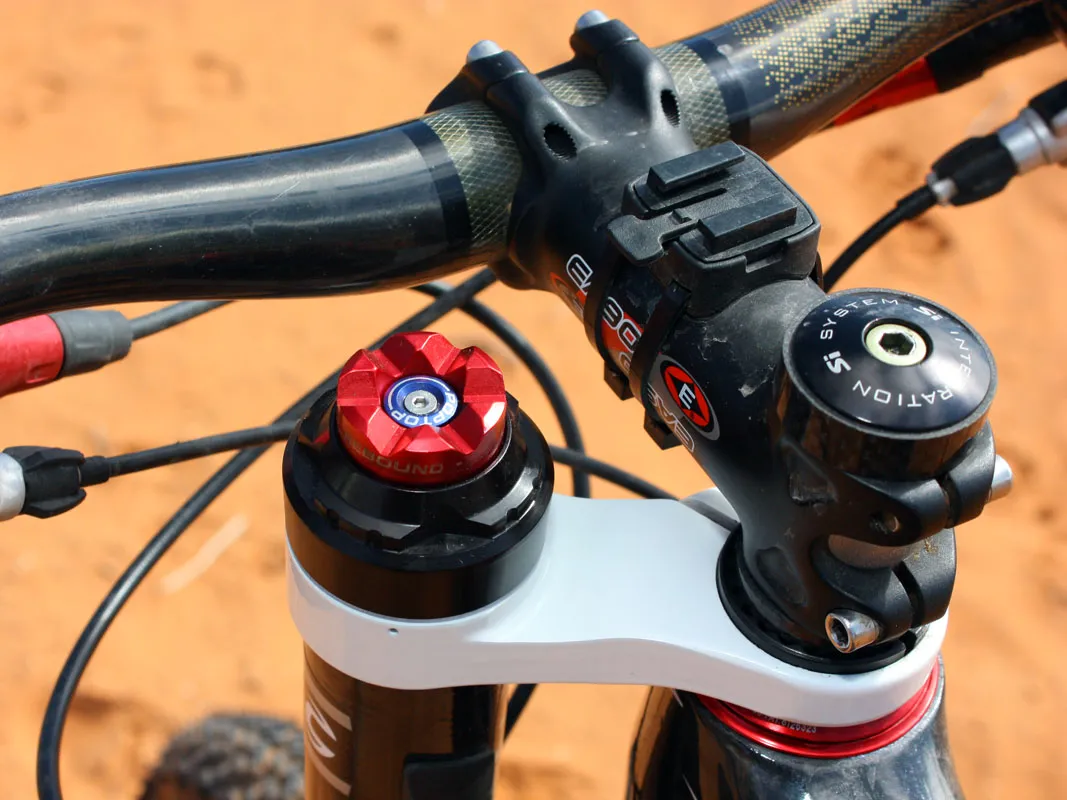Once you get past the unusual look of Cannondale's Left Ultra Carbon w/PBR fork, what's left is a stunningly light 120mm-travel fork that offers remarkably precise handling and good (and soon to be better) suspension manners, too.
Our test fork tipped the scales at just 1,490g (3.28lb) with its 1-1/8in-diameter alloy steerer tube cut to 205mm, making it as light as (or in many cases even lighter than) most top 100mm-travel models currently on the market, despite boasting a useful 20mm of extra travel.
The carbon fibre upper construction certainly helps shed the grams but most of the weight saving comes from the single-legged design. In spite of what your eyes suggest, this design does work – and work very well.
Four rows of needle bearings squelch unwanted twist between the upper and lower legs for superb steering precision while also providing small bump compliance that even the best bushing-equipped designs simply can't match.
In addition, the monstrous upper tube and dual crowns provide better fore-aft stiffness than most tapered single-crown forks we've tried and the rubber accordion boot seals the sensitive bits from outside contaminants without the need for tight-fitting – and stiction-producing – lip seals.
Cannondale fill this impressive structure with high-quality internals, including a supple Solo Air spring design borrowed from RockShox and their own PBR oil damper with a crown-mounted manual lockout.
Rather light compression valving makes for a notably lively feel on the trail and outstanding front wheel traction, and the guts even did a good job of maintaining composure on the rapidfire square-edged hits on Moab, Utah's famous Porcupine Rim trail.

Even so, we'd like to see more low-speed compression damping to combat the substantial brake dive and a slightly more progressive spring rate to keep the fork from settling too far into the mid-stroke when heading downhill.
As it turns out, both issues have been addressed for 2011 model year forks, which will include an additional adjustable low-speed check valve as standard equipment, plus a tunable air chamber volume to tweak the progression, when they start shipping in July. Riders will be able to change the spring rate easily by removing the air cap at the bottom of the leg and inserting or removing spacers.
Low speed compression adjustments will still require a damper overhaul as different-sized check valve ports will need to be swapped in and out – not as handy as an external adjustment but we'll take it nonetheless. Owners of Lefty forks from model years 2005 and later will be able to retrofit the new dampers – aftermarket availability is scheduled for September.
We were initially a little disappointed that there was no remote for our PBR lockout but the dual-crown setup places the oversized button conveniently close to your left hand so it's easy to hit as you crest the climb and start to make your way down.
For 2011, there's a new XLR remote option based on RockShox's X-Loc lever. The factory-set blowoff threshold is very high, though, and more in keeping with what die-hard racers would want instead of the high-end trail riders that are more likely to buy one of these.
Though awesome in terms of fore-aft and torsional stiffness, the Lefty structure isn't without its quirks. The cantilevered axle design can't quite keep the front wheel from tilting slightly out of plane under heavier impacts – though dual-legged forks are also vulnerable to this – and the upper crown can sometimes get in the way of your knee when pedalling out of the saddle.
In addition, riders who run low stack heights won't be able to fit stems shorter than about 80mm, the front brake cable routing can be a tad tricky, and while Cannondale now offer adapter kits for standard 1-1/8in front ends (as equipped here), it takes a bit of creativity to adapt them for tapered head tubes. Not to be forgotten, either, is the need for a dedicated front hub or wheel.






